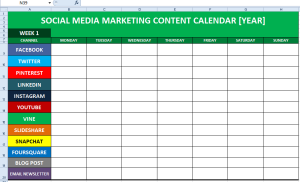Social Media Strategy: How to Manage Multiple Pages

For small to medium sized businesses, launching and managing a social media campaign can be challenging. The budget often doesn’t allow for outside support or hiring an extra team member to help the marketing team (if the business even has a marketing team). Executing great social media strategy also takes a lot of time, effort, and a long-term investment – a lot to add to someone’s already very full plate! Still, social media can be a boon for smaller businesses; making the effort should be a priority in any marketing strategy.
When businesses have more than one location, or specific products that may warrant their own separate social media pages, things can get even more complicated. Not only are there multiple social media platforms to contend with, there are multiple pages that need specific content fine-tuned for individual audiences. However, it is a beast that can be managed. Here are four tips for keeping your multi-channel, multi-account social media campaigns on track.
Utilize a content calendar
 To excel at social media, a business will need to have a long-term idea of their goals and strategy. Scrambling to come up with a post at 3 PM every afternoon is not only stressful, it’s not a great use of your time. Sure, you’ll have content up, but it might not be targeted or well thought out. Your social media campaigns should tie into your overall marketing strategy. One of the easiest ways to streamline your social media process is by using a content calendar. Using Google Docs, DropBox, or good ol’ fashioned Excel, create a monthly social media calendar. At the end of each month, spend some time going over your marketing plans for the next month, and create social media content that ties in to those goals. Depending on current events and business happenings, the calendar may need to change – so keep things flexible.
To excel at social media, a business will need to have a long-term idea of their goals and strategy. Scrambling to come up with a post at 3 PM every afternoon is not only stressful, it’s not a great use of your time. Sure, you’ll have content up, but it might not be targeted or well thought out. Your social media campaigns should tie into your overall marketing strategy. One of the easiest ways to streamline your social media process is by using a content calendar. Using Google Docs, DropBox, or good ol’ fashioned Excel, create a monthly social media calendar. At the end of each month, spend some time going over your marketing plans for the next month, and create social media content that ties in to those goals. Depending on current events and business happenings, the calendar may need to change – so keep things flexible.
Use a scheduling tool
Once you have your carefully drafted and thought out social media calendar in hand, starting your week each Monday will be a lot easier. To make it even better: utilize a social media scheduling tool to schedule post in bulk for the week ahead.
There are several paid and (mostly) free options for that business can take advantage of. On the most basic end, some platforms like Facebook offer built in schedulers. There are some outside platforms like Hootsuite that offer a free option. There also several platforms available for monthly subscriptions that offer a wealth of analytics and info that may be difficult to access otherwise. Spend some time at the beginning of the week getting everything scheduled across all your pages and channels. This doesn’t get you off the hook the rest of the week, however; you’ll need to check in daily to make sure things are posting and check in on audience feedback.
Tweak content for each platform
For each platform, and each page within that platform (such as pages for different business locations), you’ll want to finetune the content. It’s totally acceptable to use the same content across your channels – your newest blog post, for example – but the actual post will need tweaked for each audience. Also, consider that some of your Facebook audience may follow you on other channels too – they probably won’t want to see the same exact post three times in a row.
When planning your content for the month, consider posting the same piece to different channels on different days and times. Be sure to use analytics tools to get to know your audience on each channel, and understand what will fit them best.
Use free, built-in analytics
While there are platforms that offer in-depth analytics tools for social media, a good portion of small businesses won’t have the budget available for it. Thankfully, you can glean a wealth of information from several channels built in analytics tools.
Facebook, Twitter, Pinterest, LinkedIn and Instagram all offer at least basic insights tools. We have a more in-depth POV on this topic, which you can check out here. When you’re managing multiple profiles, analytics become even more important – your audience will be able to tell if you’re just posting the same thing across the board. Multiple business pages offer the opportunity to get personal and make authentic connections with smaller, more targeted audiences.
The most important thing to keep in mind when planning a strategy for one page or 10 is that social media is about the long game. There will be trial and error, experiments, and a few risks needed when you first start out. As your audience builds organically over time, you’ll gain their trust and approval – something that can’t and won’t happen overnight.
